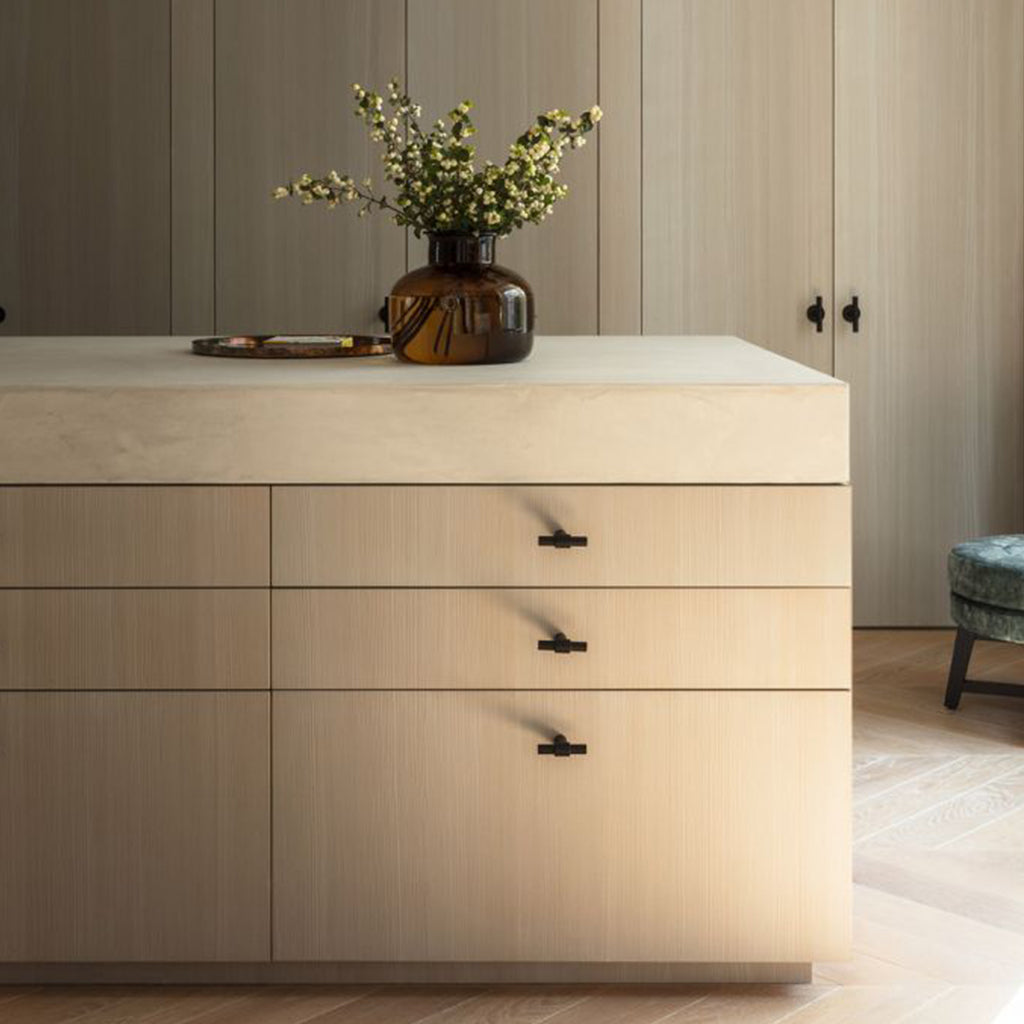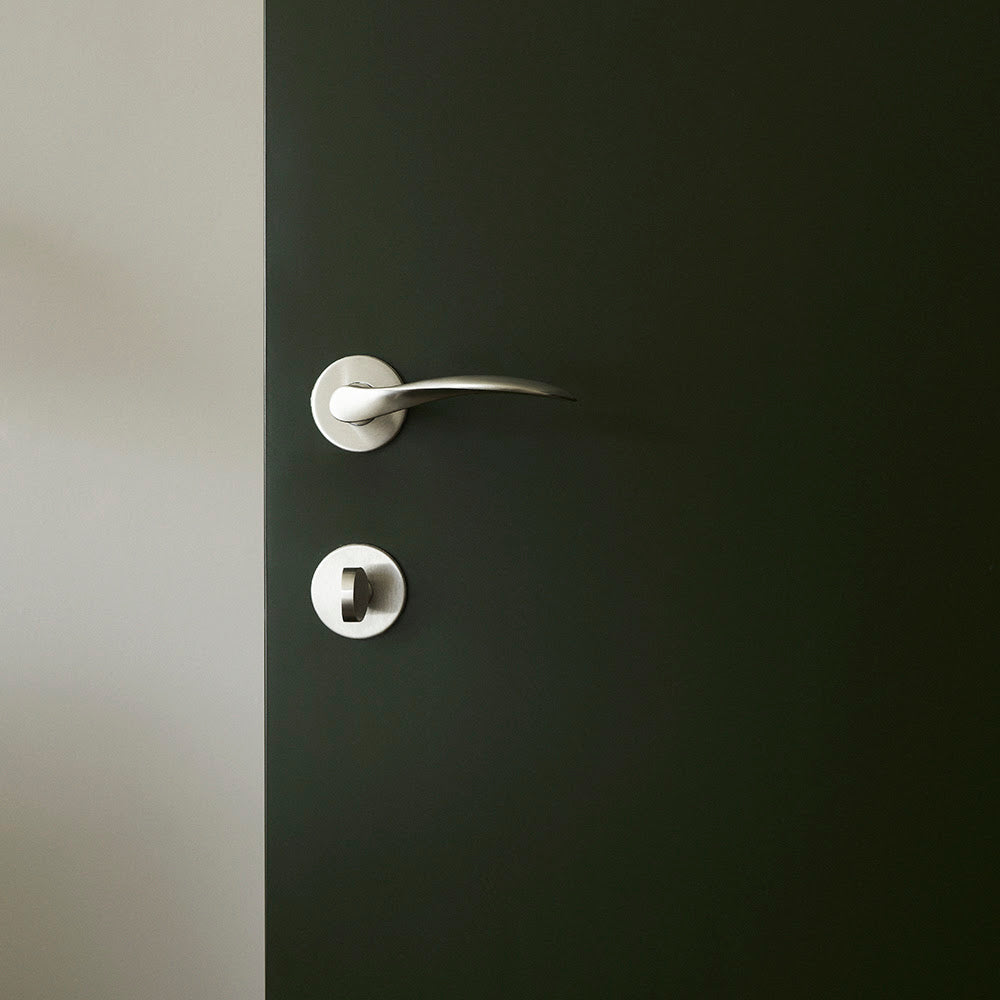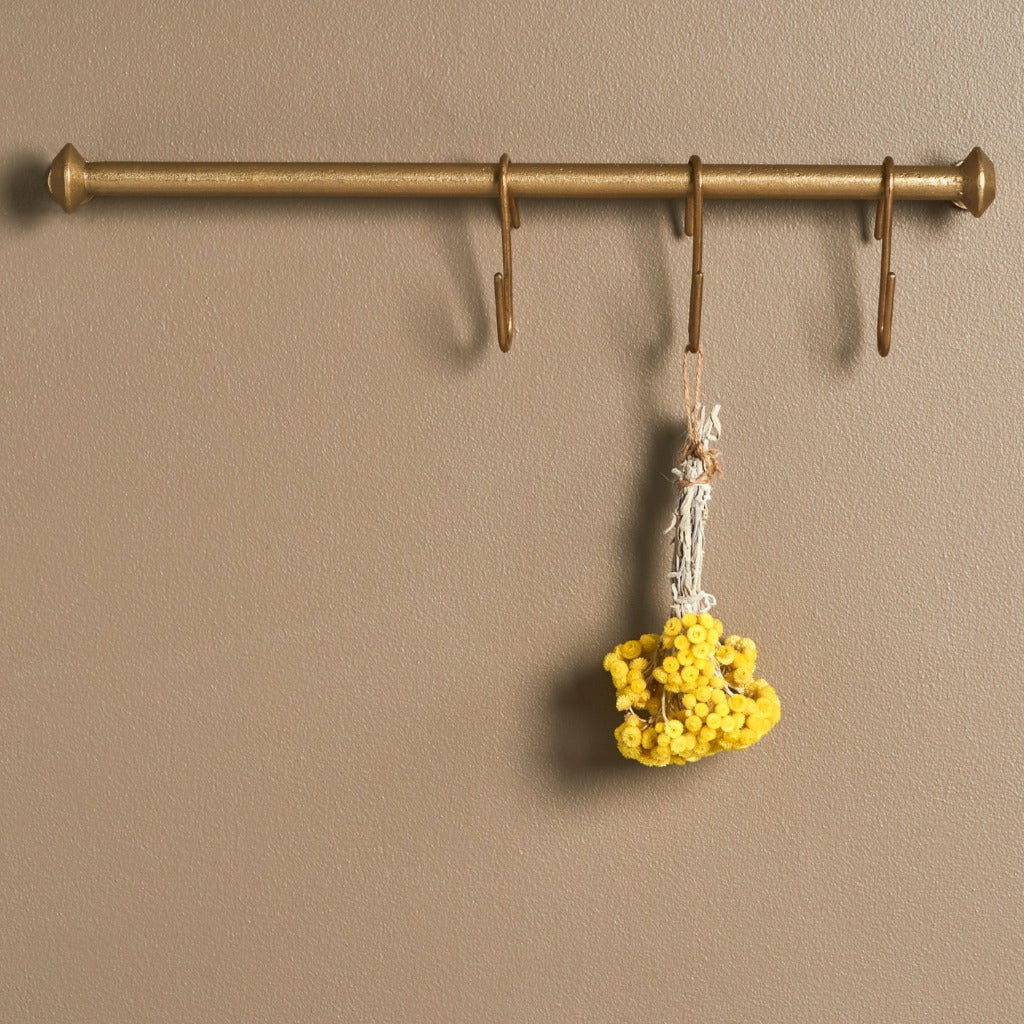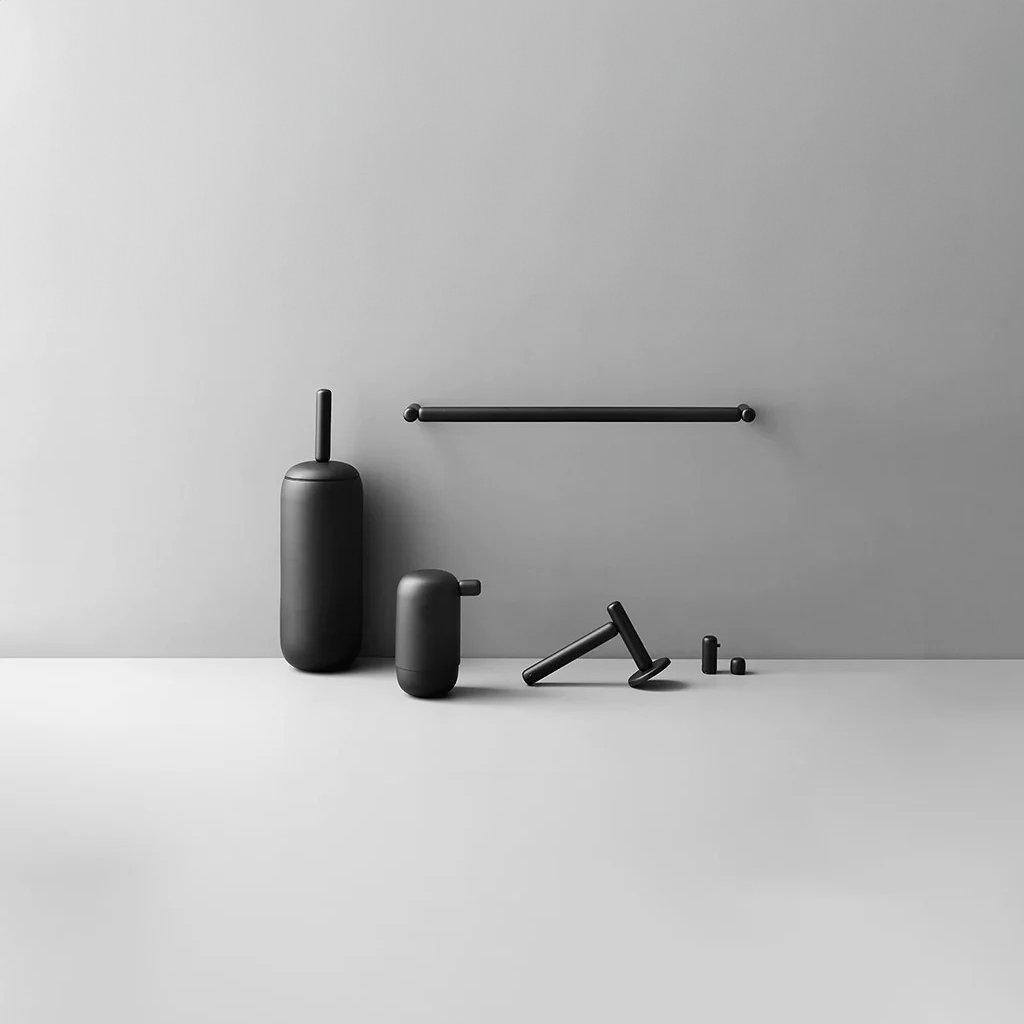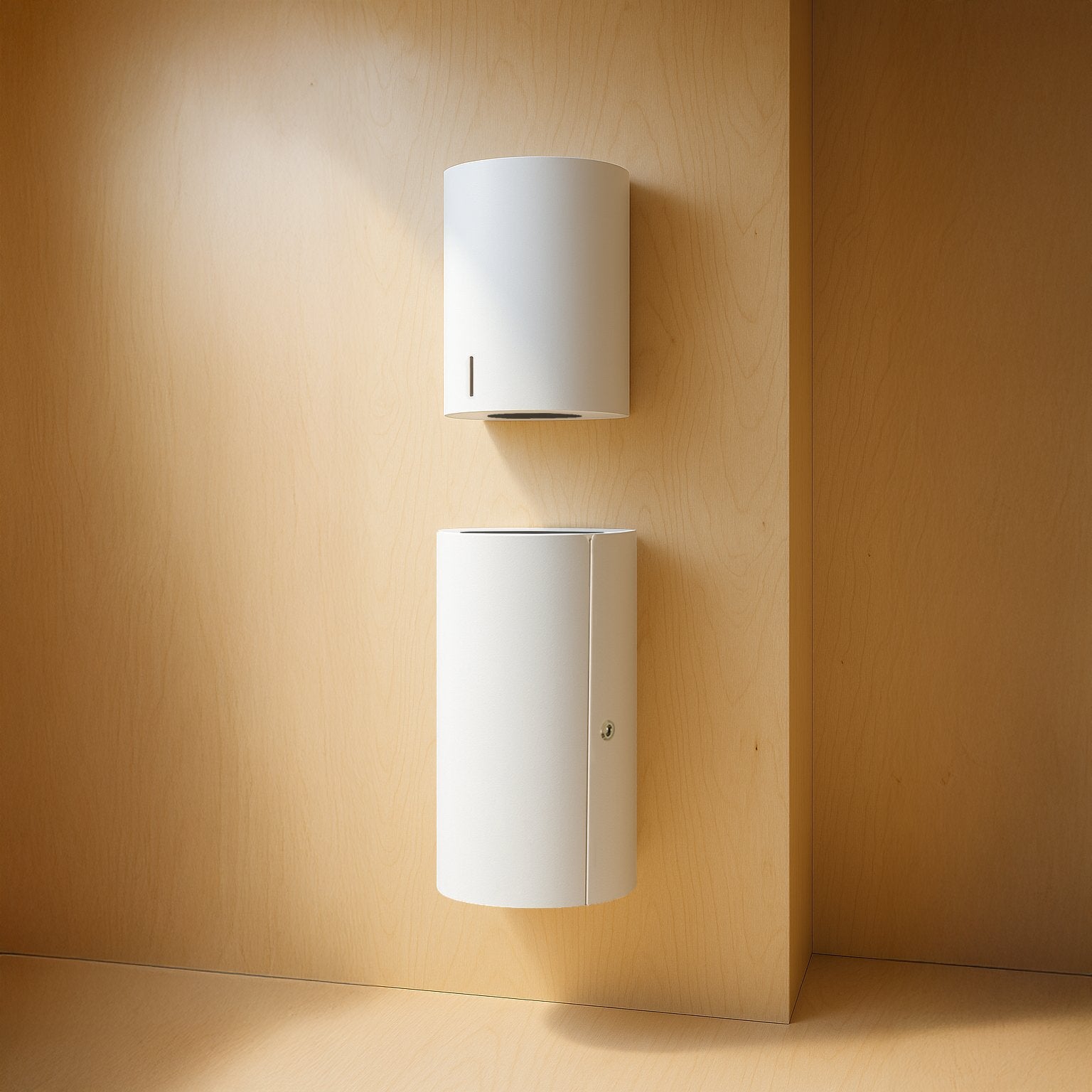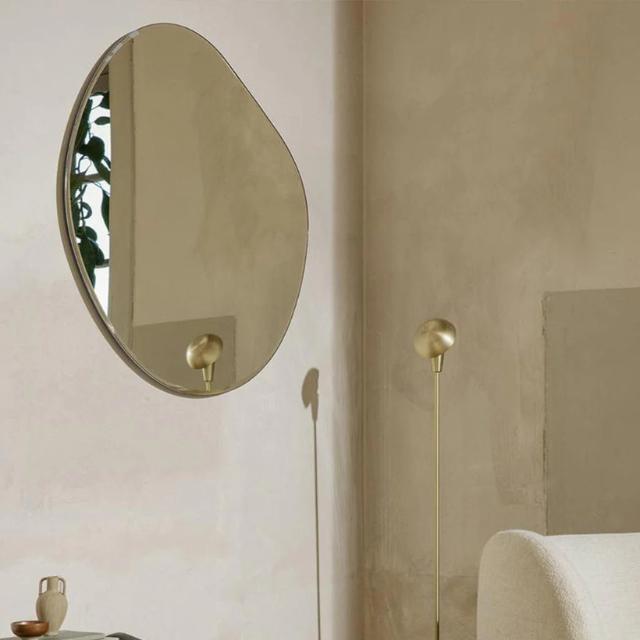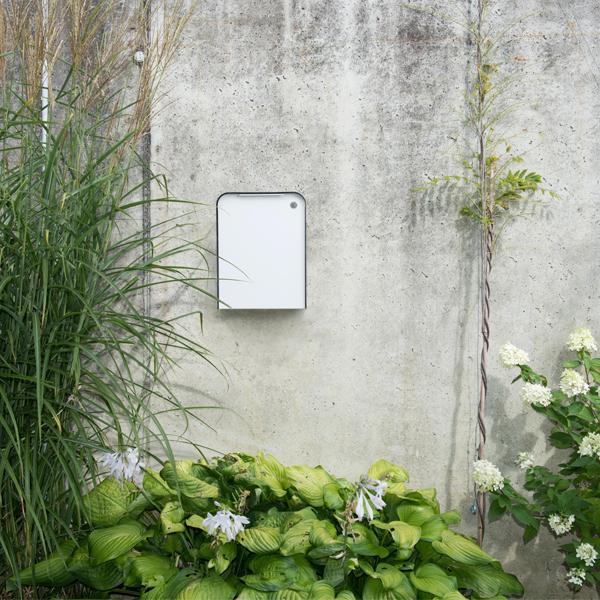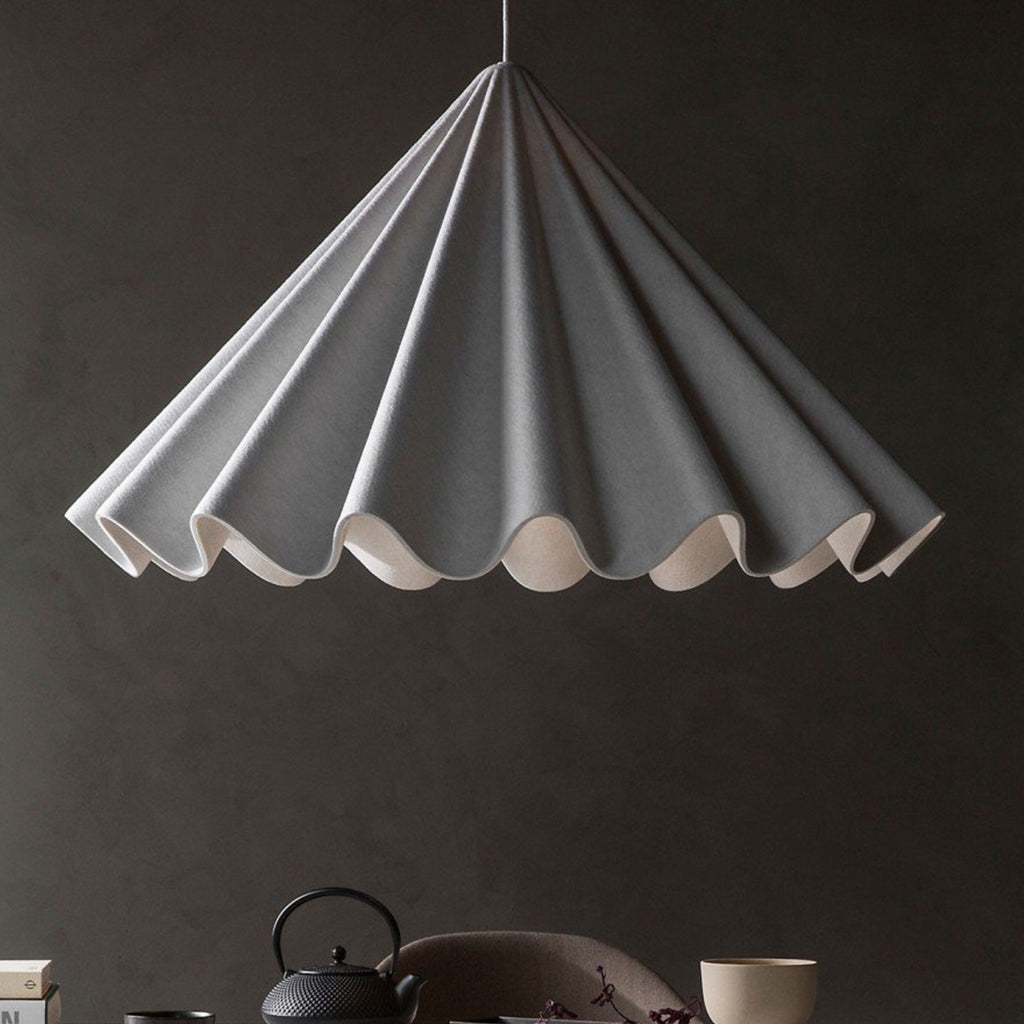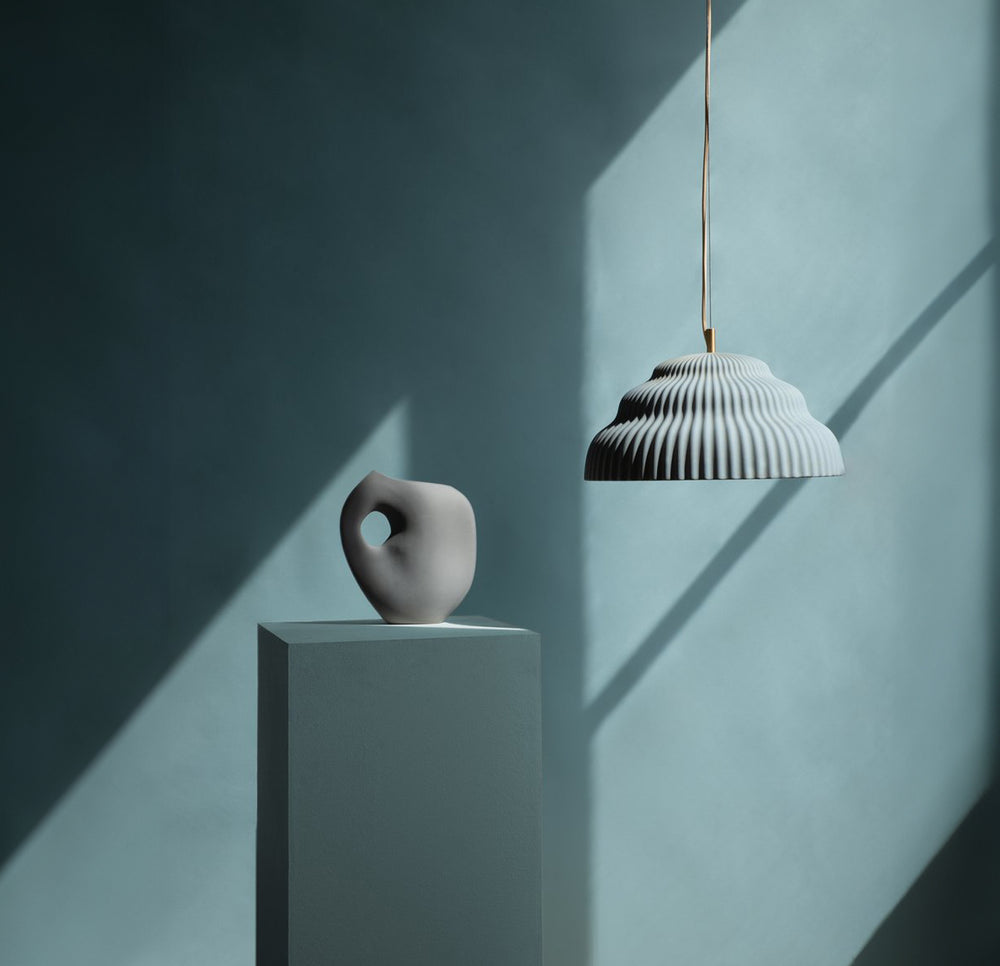Resources: Best Practices for Installing Hardware on Cabinet and Millwork
You've installed your cabinet or millwork, you've picked your finishing touches and hardware. Now, don't fumble the last step - installation.

When hardware has been purchased and cabinets installed, even experienced contractors may want to rush ahead. However, a few best practices will ensure a smooth install and perfectly fitting, long-lasting cabinet hardware.
Read on for CASSON best practices for installing your cabinet or millwork hardware.
What is my first step when installing cabinet hardware?
This may seem like an obvious maxim, but you really should measure twice and cut once. While there are many ways to fill an incorrectly placed or sized hole, the easiest way to avoid a headache later is to be absolutely sure of placement and hardware size before drilling. This is doubly true for CASSON suppliers that make hand-fabricated or hand-finished hardware, which may have slight variation in size.
Pre-drilling or pre-milling for hardware components is not recommended until all items are received and measured. CASSON, and many other retailers, will not offer refunds for damages or inconveniences resulting from the improper installation of the hardware. Which is why making sure it's perfect the first time is so important.
But, my contractor or fabricator wants to pre-drill holes...
Some contractors or fabricators will want to to pre-drill holes before painting or installing, because they want to reduce the risk of splintering or damaging the finish, or avoid waiting for hardware orders to arrive. However, an experienced and careful installer can avoid damaging the finish (see below) and ensures a perfect fit and look for your space. We will always recommend waiting until your cabinet hardware arrives before drilling or boring holes.
If your cabinet fabricator or contractor insists on pre-drilling, ordering a single knob or pull for each style of knob you plan on installing may help ensure the correct sizing.
Popular finishes, large and custom orders have longer lead times, but ordering a one off from the same manufacturer can often be fulfilled quickly. By ordering one or two samples to keep, you can use those samples to determine the perfect hole sizing and placement.
Contact sales or use our in stock features to order a pull that will match the dimensions; aim to get an order from the same manufacturer and the same style, but don't worry about finish.
Best practices to for perfect installation
First time installers or fabricators...
If you are installing cabinet hardware on your own build, we suggest you save a scrap piece of material to practice installation on. This will help to determine best practices before drilling into the finished piece. A perfect installation may mean using a guide drill-bit, or a piece of wood as a backup block, but trial and error will ensure you can have an easy hardware installation.
Charlie Pulls, left, and Matureware Pulls, right.
Tips to ensure the best placement of your cabinet hardware -
Try it before you commit
To try out various knob and pulls positions with no damage, stick reusable putty adhesive to a few pieces of hardware and try out various spots on your cabinet. To see how the hardware looks together don't just use one knob, but try out a few and really see what it will look together on multiple cabinets. Mark the one you like with a pencil and install accordingly.
Reusable adhesive is available at hardware and art supply stores - be sure to test it on an innocuous spot first, or use painters tape to protect the finish.
Templates
Once you've determined the best spot for your new cabinet hardware, the best way to ensure perfect and even installation for each door is to use a template. You can buy cabinet installation templates at hardware stores or online retailers, or you can make your own.
TIP: If you opt to buy a template, use tape to cover the holes you are not using. This makes sure that by cabinet door hole #28 you don't actually drill the wrong hole.
And how to make the perfect hole -
Drill Straight...
To mark your spot, use an awl - or a tool designed for lighting marking (or denting) wood. This small impression keeps the drill in place, and stops it from skating away.
If you're cabinets are not easily "dentable" with an awl, stop skips by begin drilling softly with a smaller drill bit before going for the right size. Mark the spot use pencil for light colours or a Sharpie for dark. Sharpie can be removed with acetone, but be sure to test in a hidden place first.
...and from the front.
Rarely, when removing a drill the side the drill exits on can cause wood to split or splinter. If installing on vintage wood or plywood, the wood most likely to split, drilling from the the front of the cabinet means that any damage will be on the hidden side of the door.
TIP: Another way to protect the door from splinting can be to drill into a back block - a piece of wood placed against the surface you are drilling to catch the end of the drill.
Tips for installing different cabinet hardware...
Installing knobs
Knobs are relatively straightforward to install, but there can be a risk of splitting or damaging wood. Consider using a backing block when drilling to protect your cabinets from splitting - especially if you are using plywood, lacquered wood or MDF. Another tip to prevent splintering is to begin the hole with a smaller bit and build-up to the correct size to prevent splintering the wood.
If your contractor is insistent on pre-drilling before finishing, and you're certain on placement, using a slightly smaller drill bit and not sizing up means you won't need to worry about the hole being too large for your hardware.
Installing Bar Pulls
Bar pulls are slightly more complicated than knobs because not only do you want your pulls to line up with each other you also want them to be straight - even a slight difference can become an eyesore.
Because of this bar pulls are best installed with the help of a Cabinet Hardware Jig, which will ensure that your pulls are lined up and level.
Make sure whatever position you pick for your pulls leaves adequate space to get a screwdriver in the back to affix the pulls to the cabinet.
Installing Edge Pulls
Edge pulls often have exposed hardware. Soft brass and easily damaged copper need to be installed with care. Do not use included brass, powder coated or other metal finishing screws with a drill, or to create the hole within the cabinet.
Instead, use a smaller sized drill bit or metal screw to create the hole, then carefully use the appropriate screwdriver to install the finishing hardware.
Always finish installation by hand tightening any cabinet knob or pull, and avoid tightening too much - too tight and you could damage or even split the wood.
Final tips for a perfect install
Now that you've determined the exact right size and placement for your cabinet hardware holes, a few extra steps can set you up for an easy, seamless and quality install.
Save some finish
Ask your cabinet manufacturer for a small container of paint for touchups, or if painting on site, save some of the leftover paint or finish in a small, clear glass jar that is clearly labelled. This means any touchups can be done quickly and easily, with minimal stress.
Use Thread Sealant to Keep the Screws Tight
Every time the screw in a knob works itself loose, the owners of those cabinets are going to think unflattering thoughts about whoever put them in. Avoid the problem by adding a dab of thread sealant, available at your local hardware store, to every screw you install.
Mix your perfect filler
If you do have gaps use a wood putty to fill in any holes or spaces your not using. To get the perfect tone, get multiple shades and mix them together. Find one shade that matches your darkest grain, and one that matches the lightest, and an optional third if your tone has a lot of variation. Blending them will ensure a perfect match.
Glue down the oblong knob
Rectangular knobs that fasten with a single screw are notorious for twisting with use. Thread sealant helps, by keeping the screw from coming loose from the knob, but it won't necessarily stop an oblong knob from twisting. To solve the problem, add a drop of superglue to the back of these types of knobs before you install them. The adhesive will keep them firmly in line on the cabinet front.




